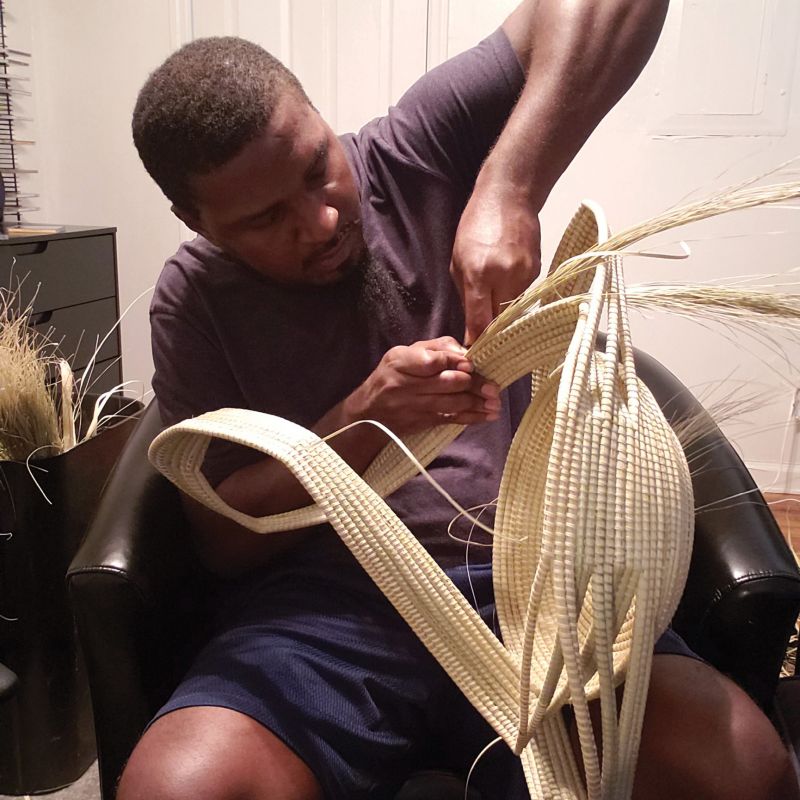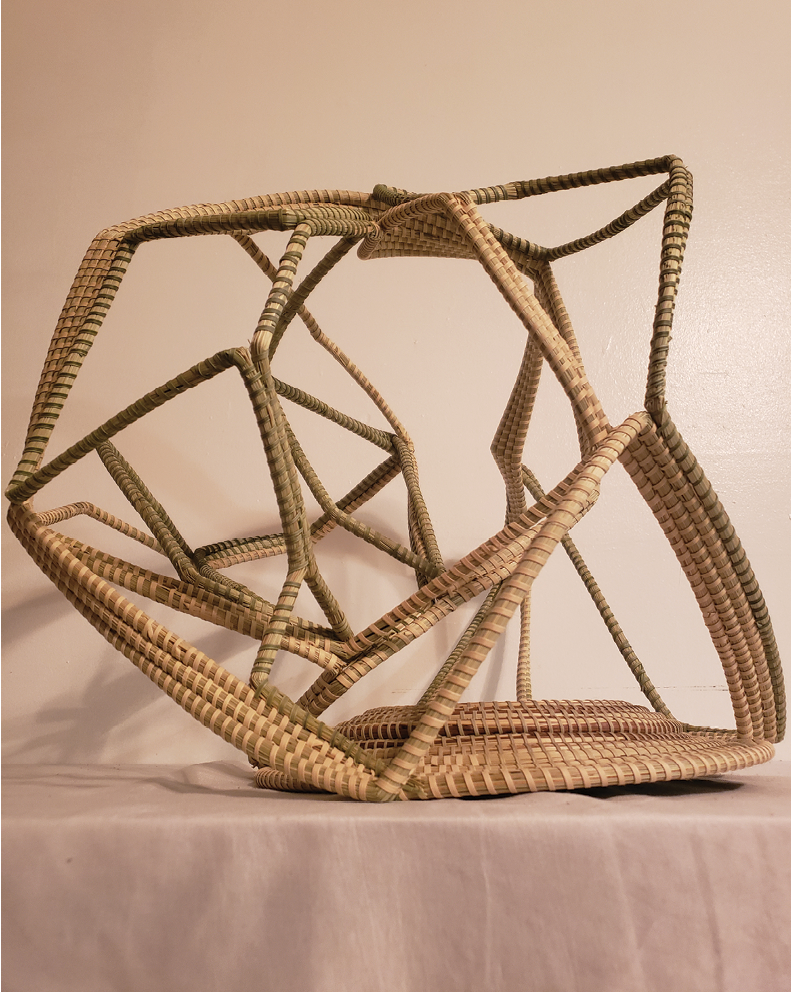See artist Antwon Ford's “Grass in Motion” sculptures this month at the Gibbes

Sweetgrass basketmaker Antwon Ford is the artist-in-residence at the Gibbes Museum of Art through September 27.
Antwon Ford embraces tradition even as he breaks it. As a sweetgrass artist, the Mount Pleasant resident carries on a basket sewing technique passed down through generations, but not without putting a bold, innovative spin on the ancient West African medium. He’s in good company—famed Charleston blacksmith Philip Simmons more or less did the same thing by transforming functional craft (in his case, the forging of wagon wheels) into ornamental ironwork artistry. “Antwon is doing things with sweetgrass we’ve never seen before,” says historian and curator Dale Rosengarten. “He is a sculptor, turning a traditional craft into conceptual art.”
Ford and his cousins learned sweetgrass basket sewing from their grandmother; he sold his first basket at age 12. That was also the year he visited Paris art museums while his mother was stationed at a military base in Germany. At Wando High School, art was a favorite class, but he went on to major in English at Allen University, and following college, taught English in Guatemala for several years. After returning to Mount Pleasant in 2009, Ford picked basketmaking back up. “That’s when I began to take my art a little more seriously,” says the 35-year-old, who shows his work at Neema Gallery. While he occasionally still makes traditional forms, his focus is now on large sculptural pieces that embody what he calls “Grass in Motion.”
As artist-in-residence at the Gibbes Museum of Art from August 31 to September 27, Ford will hold open studios, where visitors can observe and ask questions as he morphs sweetgrass, palm fronds, and bulrush into dramatic forms that explore a space-time continuum, or what he calls the “fourth dimension.” “I’m having fun as an artist,” he says. “I wanted to do something really different with basketmaking. I’m just going with my natural flow.”

Ford explores the idea of what he calls the ”fourth dimension“ in his baskets.
Basketmaking Family: My training was pretty informal over the years. I learned by watching my grandma; I was always asking questions, mimicking what she was making. As I got older, my work started to become a bit more artistic. I was paying attention to detail more and becoming more in tune with my artistic side. But I was still just a teenager—it wasn’t until much later that I started to take it more seriously. There are six of us grandkids who my grandmother taught how to sew baskets, and I’m the only one still doing it. I’m definitely still growing as an artist. I think it’s important to know there’s always room for growth.
Creative Process: I generally have an idea in mind, but by the time I’m finished, it usually looks 70 percent different than what I’d envisioned. It’s very much a process of creating, and trial and error. I’m still learning how to make different angles—sharp 45-degree angles are really challenging. It requires a new technique that I was creating without even realizing I was doing it. It also requires breaking the rules. Sometimes I have to look at a piece and ask if I really want to break the rule; for example, leaving a single coil or row by itself, unattached to another coil, which is typically not done. And then I say, “Okay, I’ll go ahead and figure out how to make it work” and move forward. But it takes a lot of time. I have one particular piece I’ve been working on for seven months, and I’m still trying to figure it out.
Another Dimension: It’s all about movement. Fourth dimensional art will likely give the illusion of movement while still being stationary. Part of my exploring this entails trying to design sculptures where each 90-degree angle looks like a completely different sculpture if you walk around it, so it almost appears lifelike, as if it’s reshaping on its own—like something from a science fiction movie. I try to incorporate Gestalt psychology in my work as much as possible, as that plays a big role, too.
Artist-in-Residence: This is the first time I’ve worked with the Gibbes, so I’m grateful for this opportunity. I’ll be holding studio hours on Fridays and Saturdays and am excited to meet people and introduce them to my art. I love working with sweetgrass; it’s so flexible, such an awesome medium. You can really make any design with it; the only drawback is that it’s so time consuming. If people want to experiment with the sweetgrass, I’d welcome that. I love teaching.